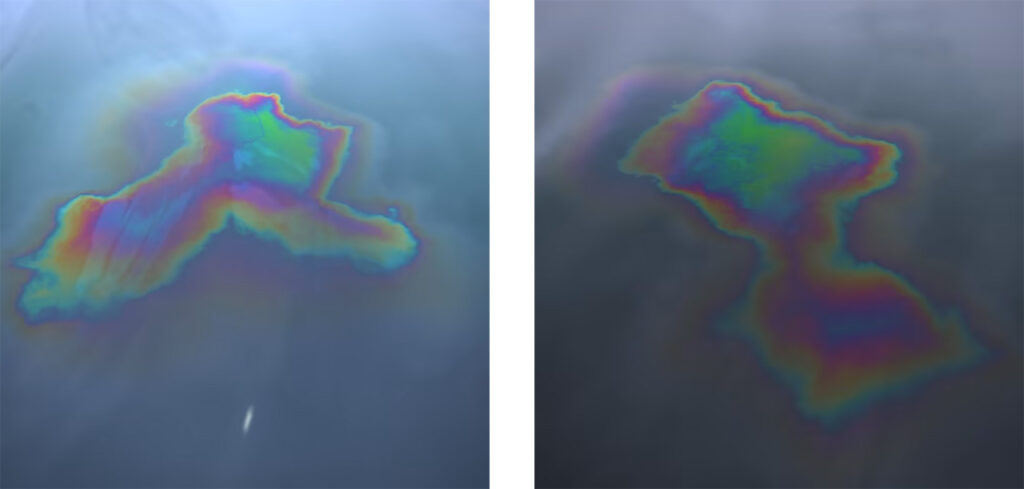Not six months from its launch and Pace Verso can already boast a run of enviable releases. The likes of DRIFT, Zhang Huan, Urs Fischer, and Glenn Kaino have dropped high-profile projects on the NFT platform, which, as promised, has been facilitating the minting, exhibiting, and collecting of digital art. And it’s not easing up: last week, the Web3 arm of Pace Gallery announced its team-up with generative art platform Art Blocks for what’s billed as a “multifaceted collaboration.”
Chiefly, the partnership will see Pace’s stable of artists tapping Art Blocks’ generative tools and expertise to create digital works, with additional physical and digital programming in the pipeline. The collaboration was teased with the drop of Leo Villareal’s Cosmic Reef earlier in January, and will be fully inaugurated on June 21 with the unveiling of John Gerrard’s Petro National, a collection of 196 generative NFTs that examine the environmental impact of global oil consumption. “Discovering Art Blocks allowed me to understand that the NFT can be much more than a media file,” said Gerrard. “Rather, it is a complex, data driven, on-chain world that aligns with my historic works in game engines.”

Released in January, Cosmic Reef marks artist Leo Villareal’s first NFT project, minted and presented in collaboration with Art Blocks. Image: Pace Verso
Indeed, Art Blocks hasn’t just been a generative font, but has emerged as a prime mover in the NFT space. At a height, the platform was doing trading volume in excess of $580 million in August 2021; sales volumes are now down to a still-respectable $27 million for May 2022. The value of Art Blocks, though, is as much its role in enriching generative art — a practice that has grown in a year from a niche and obscure concern into a field that’s powering sales at Sotheby’s and Phillips.
The Pace Verso and Art Blocks partnership, then, arrives in time to meet burgeoning market interest and demand for generative art. It’s also bound to advance the practices of Pace’s roster of artists, says President and CEO Marc Glimcher, connecting them to new technologies as much as collecting circles. Here, he elaborates.
What about Art Blocks made it an attractive partner to Pace Verso?
Bottom line is that it’s very fundamental — we believe in the possible futures of NFTs. Art Blocks is a platform made by artists and we are too. Rule-based art is a larger category than algorithmic and generative art, and something that Pace has been involved with for a couple generations beginning with Agnes Martin and Sol LeWitt. There’s something there that Sol was trying to connect with that’s so native to the NFT as a tool. The NFT really lends itself to that kind of art and so, in meeting Erick, who has dedicated his entire platform to a segment of rule-based art making, we found a philosophical alignment.
Could you detail how the collaboration will play out: what will each platform bring to the partnership?
Through this partnership, Art Blocks and Pace Verso will be releasing boundary-pushing generative NFT projects by Pace’s artists as well as crypto-native artists selected by and developed in partnership with Pace Verso. This collaboration allows us to connect our artists to other artists and to engineers that can lead to fantastic collaborations. It also opens our artists to a community of people who are interested in rule-based art. Our priority is to connect our artists to new collecting communities, and this is one of them.

John Gerrard’s Petro National NFTs feature generative patches of gasoline forming outlines of various countries to highlight the impact of global oil consumption. Image: Artblocks.io
Why does John Gerrard’s Petro National make for a great first collaborative project?
Through his style of innovative technological techniques and groundbreaking creative approaches to his art, John Gerrard was a natural choice for the first project of Pace Verso and Art Blocks’s partnership.
How else are the partners hoping to engage the collector community?
For instance, Erick and I recently participated in a conversation on Pace Verso’s Discord. Additionally, an AMA discussion between John Gerrard and Art Blocks Chief Creative Officer Jeff Davis will take place in the coming days. Similar programming will take place for each launch of this partnership.
Since Pace Verso’s launch last year, how have buyers responded to the platform?
Our clients went from saying “What is a NFT?” like an accusation to saying “What is a NFT?” like they really wanted to know more. They are coming around to understanding that there’s something to this tool that artists can exploit.
As important, how have the gallery’s artists responded to the possibilities posed by Pace Verso?
Artists are not about playing it safe. Representing artists is not about playing it safe. We trust our artists and if they are interested and want to take chances, it’s our job to take chances with them. [Artist Jean] Dubuffet said that the only proper condition for art is one of permanent revolution and we always try to follow his advice.



